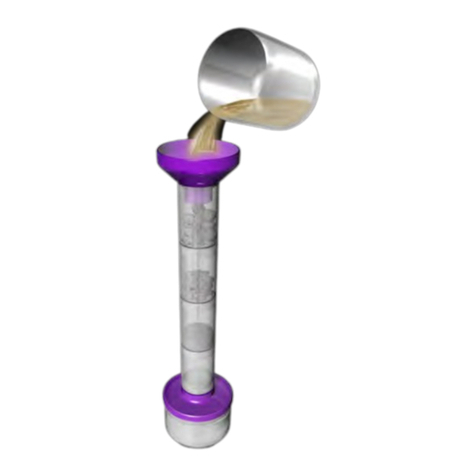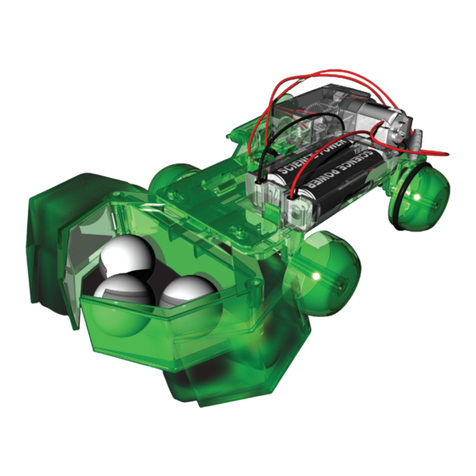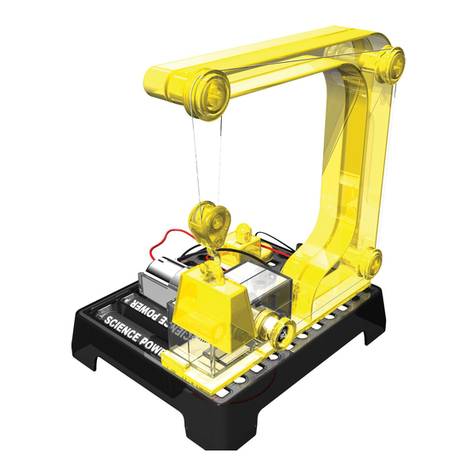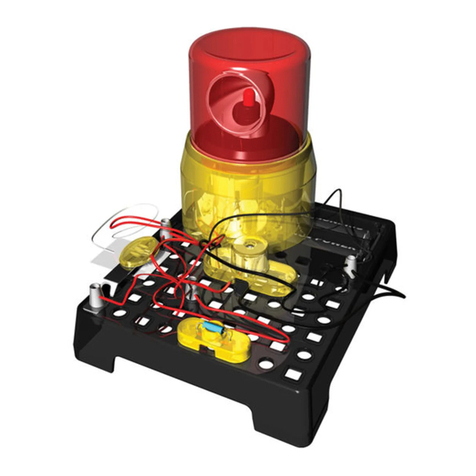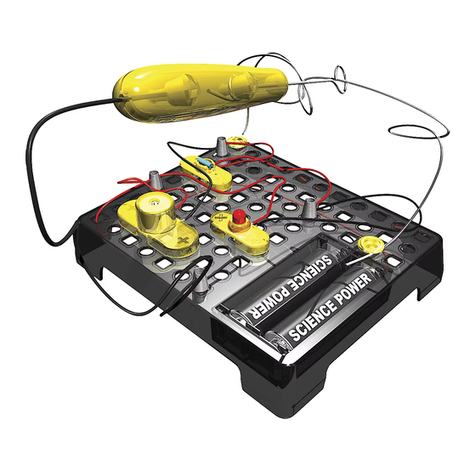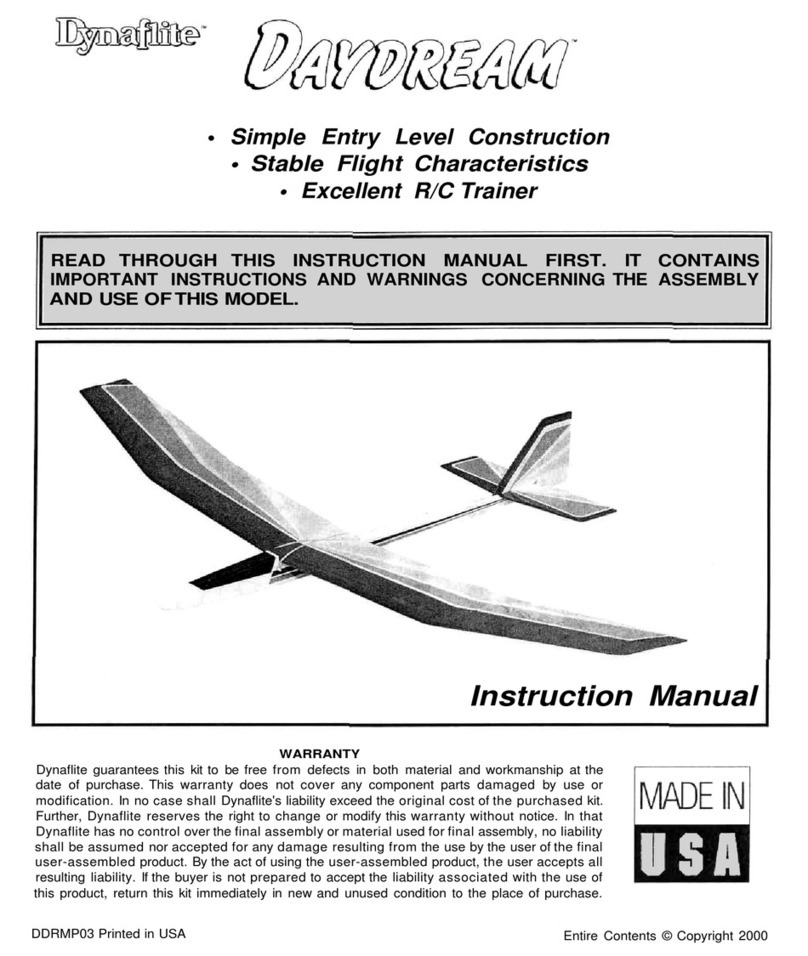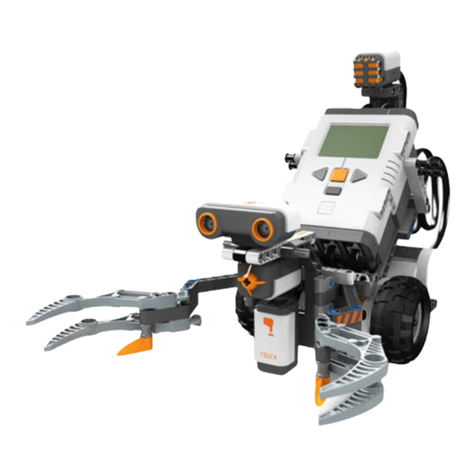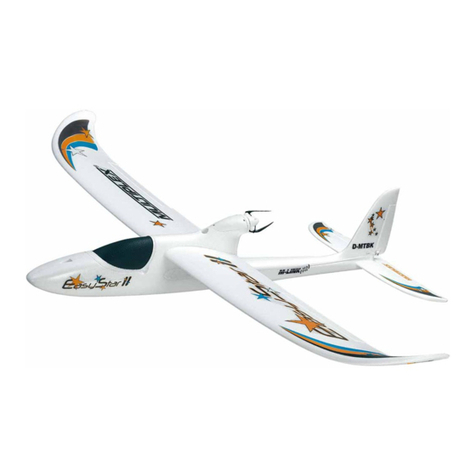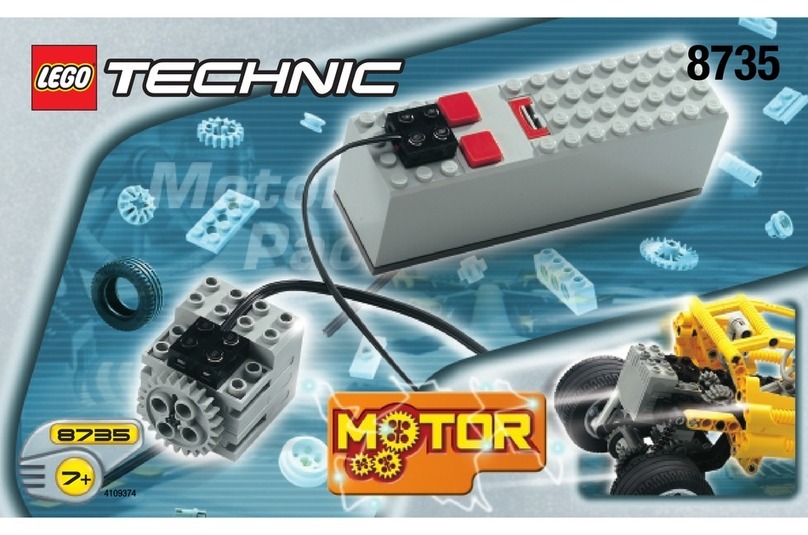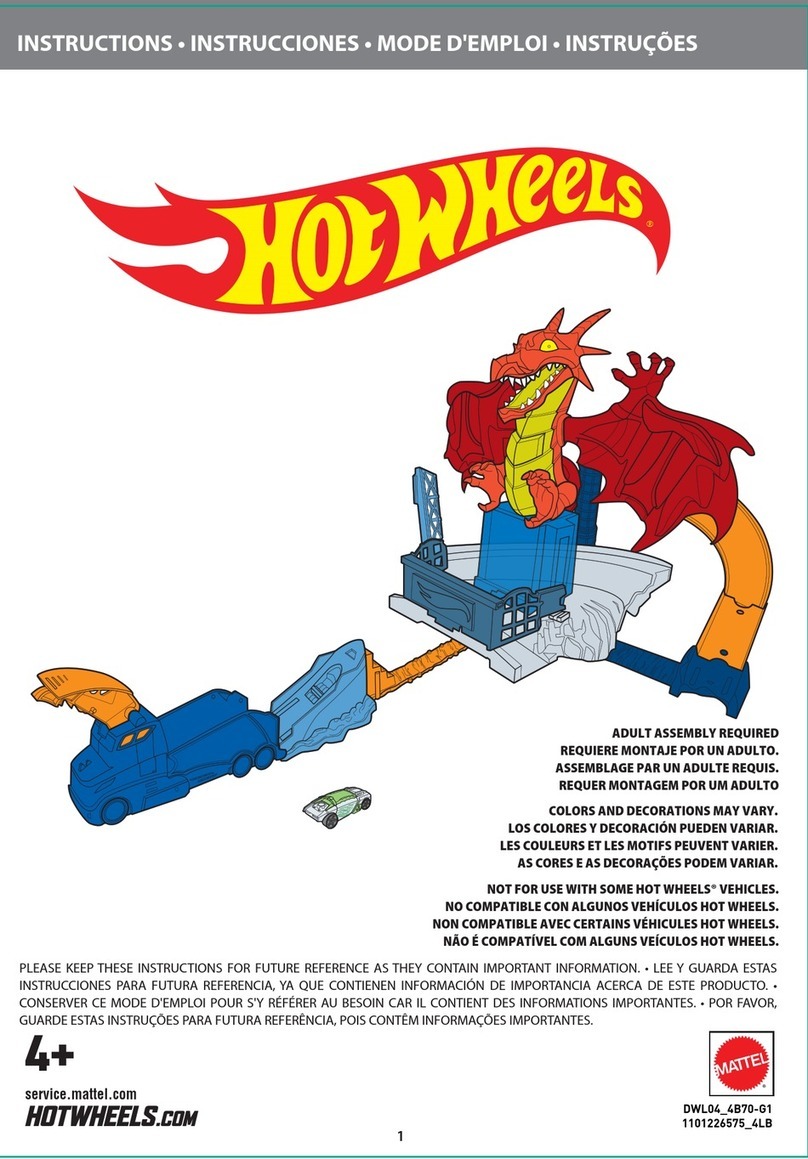
3
Lær om elektricitetens hemmeligheder via en lang
række aktiviteter med forskellige komponenter
og tilbehør. Lær og leg med denne usynlige
energikilde. Følg den illustrerede brugsvejledning
for at opdage og eksperimentere med de
grundlæggende principper for elektricitet.
Liste over komponenter
• Eksperimentbakke
• Forbindelsesstykke
• Hjørneforbindelsesstykke x 2
• Krydsforbindelsesstykke x 2
• Forlængerledning x 2
• Trykknapkontakt
• Pærer x 2
• Motor
• Propel
• Optiske skiver
• Skiveholder
• Batterimagasin
Illustreret brugsvejledning
Nemt og sikkert at samle!
ADVARSEL!
Produktet er ikke velegnet til børn under 3 år,
da det indeholder smådele, som kan sluges
eller inhaleres og forårsage kvælning. Læs den
medfølgende brugsvejledning omhyggeligt og
opbevar den i æsken til fremtidig brug. Indholdets
farver og detaljer kan afvige fra illustrationerne.
FORSIGTIG!
INDEHOLDER ELEKTRISKE OG ELEKTRONISKE
DELE, DER SKAL BORTSKAFFES SOM
SPECIALAFFALD.
Tilmeldt registret for producenter af
elektroniske og elektriske apparater som nr.
IT08010000000019 den 10/01/2008.
Advarsel! Må ikke rettes mod øjne eller ansigt.
Advarsel! Kun beregnet til børn fra otte år og
opefter. Vejledning for voksne, som fører kontrol
med legen, medfølger og skal nøje overholdes.
Billedet på forsiden af æsken er rent illustrativt og
viser blot spillets karakter og produktets type.
Strømforsyning: 2 x 1,5 V AAA/LR03
(medfølger ikke)
Paljon tehtäviä, joista voit valita ja erilaisia
komponentteja ja tarvikkeita, joiden avulla voit
oppia sähkön saloja. Hauskoja tehtäviä, joiden
avulla opit tuntemaan tämän näkymättömän
energianlähteen. Noudata kuvitetussa
ohjekirjassa annettuja ohjeita oppiaksesi sähköä
koskevat perusperiaatteet ja tehdäksesi kokeita,
joissa voit testata niitä käytännössä.
Komponenttilista
• Koepenkki
• Liitin
• Kulmaliittimet x 2
• Ristiliittimet x 2
• Jatkojohdot x 2
• Painokatkaisin
• Lamput x 2
• Moottori
• Lentävä lautanen
• Värikiekot
• Kiekonpidike
• Paristonpidin
Kuvitettu ohjekirja
Helppo ja turvallinen koota!
VAROITUS!
Tämä tuote ei sovellu alle 36 kuukauden ikäisille
lapsille, koska se sisältää pieniä osia, jotka saattavat
aiheuttaa tukehtumisen joutuessaan nieluun tai
hengitysteihin. Lue tuotteen mukana tulevat
ohjeet huolellisesti ja säilytä ne pakkauksessa
tulevaa tarvetta varten. Värit ja sisällön
yksityiskohdat saattavat poiketa kuvassa esitetystä.
HUOMAUTUS!
SISÄLTÄÄ SÄHKÖISIÄ JA ELEKTRONISIA
LAITTEITA, JOTKA TULEE HÄVITTÄÄ ERIKSEEN.
Rekisteröity elektronisten ja sähköisten
laitteiden valmistajien rekisteriin numerolla
IT08010000000019 10/01/2008.
Varoitus! Älä osoita kohti silmiä tai kasvoja.
Varoitus! Ainoastaan 8-vuotiaille tai sitä
vanhemmille lapsille. Ohjeet tehtävien tekemistä
valvoville aikuisille sisältyvät pakkaukseen ja niitä
tulee noudattaa huolellisesti.
Pakkauksen kannessa oleva kuva on ohjeellinen
ja sen tarkoituksena on kuvata pelkästään pelin
aihe-aluetta ja tuotteen tyyppiä.
Virta: 2 x 1,5V AAA/LR03
(eivät sisälly pakkaukseen)
komponentteja ja tarvikkeita, joiden avulla voit
oppia sähkön saloja. Hauskoja tehtäviä, joiden
avulla opit tuntemaan tämän näkymättömän
energianlähteen. Noudata kuvitetussa
ohjekirjassa annettuja ohjeita oppiaksesi sähköä
koskevat perusperiaatteet ja tehdäksesi kokeita,
joissa voit testata niitä käytännössä.
Tämä tuote ei sovellu alle 36 kuukauden ikäisille
lapsille, koska se sisältää pieniä osia, jotka saattavat
aiheuttaa tukehtumisen joutuessaan nieluun tai
hengitysteihin. Lue tuotteen mukana tulevat
ohjeet huolellisesti ja säilytä ne pakkauksessa
tulevaa tarvetta varten. Värit ja sisällön
yksityiskohdat saattavat poiketa kuvassa esitetystä.
oppia sähkön saloja. Hauskoja tehtäviä, joiden
avulla opit tuntemaan tämän näkymättömän
energianlähteen. Noudata kuvitetussa
ohjekirjassa annettuja ohjeita oppiaksesi sähköä
koskevat perusperiaatteet ja tehdäksesi kokeita,
joissa voit testata niitä käytännössä.
Tämä tuote ei sovellu alle 36 kuukauden ikäisille
lapsille, koska se sisältää pieniä osia, jotka saattavat
aiheuttaa tukehtumisen joutuessaan nieluun tai
hengitysteihin. Lue tuotteen mukana tulevat
ohjeet huolellisesti ja säilytä ne pakkauksessa
tulevaa tarvetta varten. Värit ja sisällön
yksityiskohdat saattavat poiketa kuvassa esitetystä.
FI
DK

